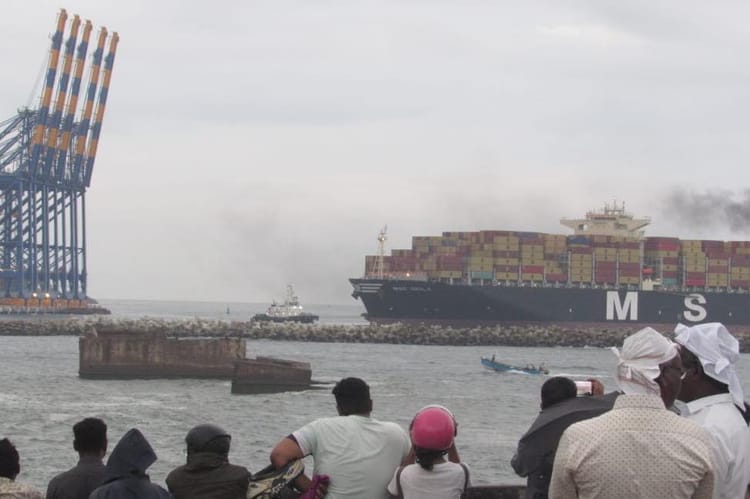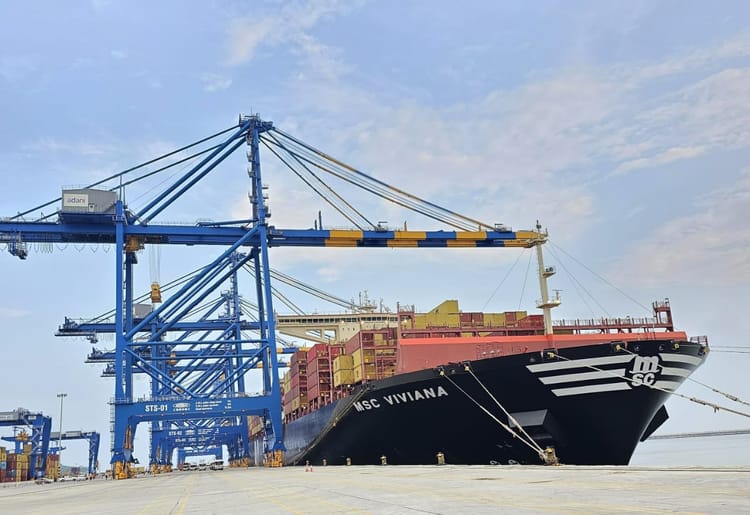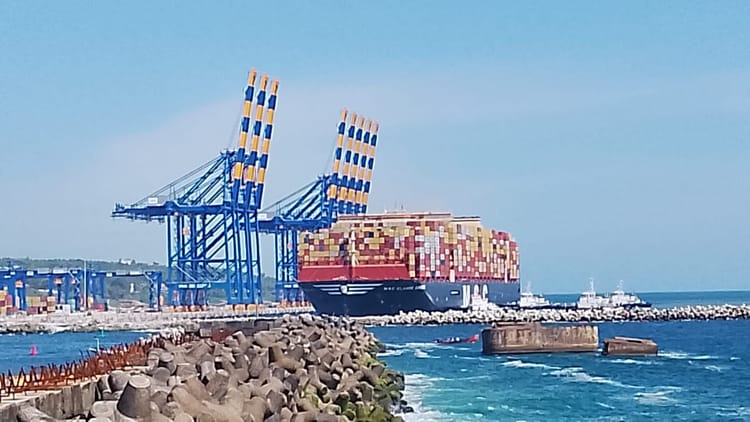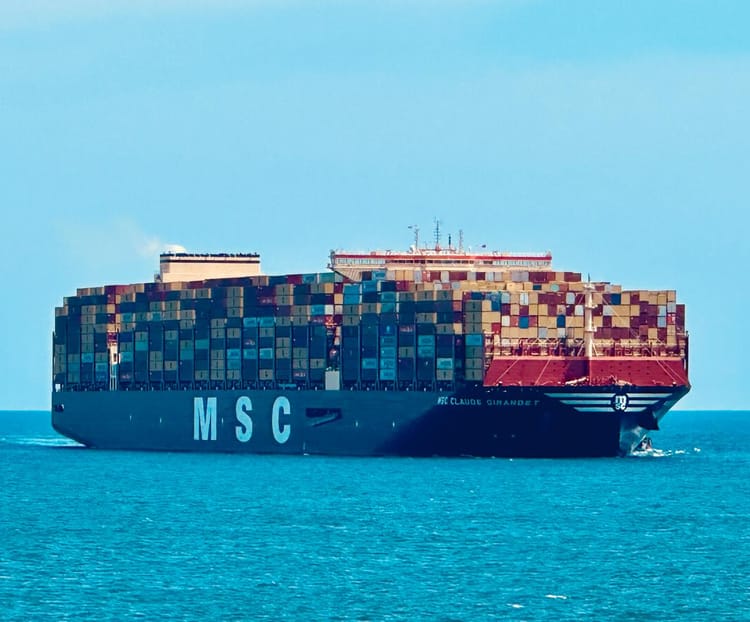Chennai's Chinese Odyssey: Powerhouse Potential!

In the beginning of this year, the news of Tamil Nadu Chief Minister MK Stalin raising an issue that should have garnered national or international attention was unfortunately confined to a local matter. This serves as a stark reminder of the feeble influence of those who advocate for India's progress. Often, these voices fail to reach the round table discussions where decisions are made to shape the country's development agenda. And even when they do, it has become customary to dismiss their proposals, if they disregard the interests of the dominant political parties. Regrettably, it seems that a similar fate has befallen the issue at hand.
On the 12th of January 2023, the Tamil Nadu Legislative Assembly unanimously passed a resolution emphasising the urgent implementation of the Setu Sea Canal project by the central government.
The Setu Sea Canal project, also known as the Setu Samudra project, has a history that spans over 150 years. The initial proposal was put forth by Alfred Dundas Taylor with the aim of establishing a new shipping route passing through Palk Strait, which lies between India and Sri Lanka. The project's abandonment was justified on the grounds that the region still bears evidence of the Rama Setu, the bridge believed to have been constructed by the Vanara Sena to aid Lord Ram in his quest to rescue Sita from Lanka. Undeniably, governments face challenges when it comes to making decisions that may disregard the deeply held beliefs of the people. However, history has shown that when presented with factual evidence, even believers themselves are willing to seek a middle ground. Hence, it becomes essential to examine the facts surrounding this matter.
India continues to grapple with a significant population living in poverty, making it a crucial issue that demands attention. While governments claim to have lifted approximately 415 million people out of poverty between 2005 and 2021, the World Bank's assessment indicates that progress in this area remains unsatisfactory. Although poverty rates have decreased in India over the past decade, the decline falls short of earlier projections. The Indian poverty standards define individuals earning less than Rs 1,173 per month as poor, and even a marginal increase of one, two, or ten rupees can swiftly reclassify them as "non-poor." Consequently, an astonishing 415 million people were deemed to have transcended poverty, despite the questionable accuracy of such categorisations. Human Development Index (HDI), a global measurement index, where India currently ranks a disappointing 132. This ranking highlights the immense challenges faced by Indian citizens in accessing basic living facilities, placing the country among the most backward in this regard. It is disheartening to consider that, after 75 years of governance and the preservation of our beliefs, we find ourselves in this shameful situation.
While we acknowledge and respect the concerns based on faith surrounding the Setu Sea Canal project, it is important to recognise the potential losses incurred by not implementing such a project. The absence of this project significantly impacts the efficiency and productivity of India's eastern coast ports, including Kolkata, Haldia, Paradip, Visakhapatnam, Kamarajar, Chennai, and VO Chidambaranar. These ports handle a substantial volume of Indian cargo, accounting for approximately 2.1%, 6%, 16.1%, 9.6%, 5.4%, 6.7%, and 4.7% respectively, totaling around 720 million tonnes each year.
Currently, every ship bound for Middle East, Africa, and European ports is forced to undertake an additional journey of at least 1,750 kilometres, circumnavigating Sri Lanka instead of taking the shorter route through the Palk Strait. This not only incurs additional costs but also has significant environmental and health implications due to the extra fuel burned for the extended route. In light of these considerations, it is crucial to address these concerns and seek a more efficient and environmentally friendly solution.
The matter at hand requires us to reevaluate our stance, considering the significant environmental impact of shipping, which alone contributes to an estimated 2.5-3% of global carbon emissions. This issue directly affects our health and the well-being of future generations. Should we prioritise faith over the health implications we face?
Furthermore, the extended shipping route not only burdens Indian exporters, but it also diminishes the competitiveness of their products in the international market. The increased distance translates to higher costs and surcharges imposed by shipping companies, ultimately reflected in consumer prices. As a result, Indian goods become less affordable and struggle to maintain their presence on the global stage.
Let us draw inspiration from the success of Egypt's Suez Canal, which generated a remarkable revenue of Rs 64,000 crore in the last fiscal year. Once the initial capital dredging is completed, the recurring costs of maintaining the canal are minimal, resulting in a substantial portion of the revenue turning into profit. The benefits of the Suez Canal extend not only to Egypt but also to the shipping industry as a whole.
By utilising the Suez route, each ship saves approximately 9,000 kilometres in travel distance. Without the canal, ships would be forced to take a 21,000-kilometre detour around Africa to reach their destinations. Despite historical traditions and narratives surrounding Egypt and Israel, the completion and operation of the Suez Canal were not hindered. Even the Exodus of Moses, with its potential mud flats and divine intervention, did not impede the construction of the canal.
On the contrary, the Suez Canal stands as a testament to unity and determination. It brought the nation of Egypt together, both within the country and abroad, during its renovation. Let us find inspiration in this remarkable achievement and support the Setu Sea Canal project as a united nation. This mega project, by the grace of God, will pave the way for comprehensive development in all sectors, just as it has done for Egypt.
The annual revenue of approximately Rs 64,000 crore generated by the Suez Canal speaks volumes about its significance. Equally noteworthy is the fact that the canal helps avoid a staggering 53 million tons of carbon emissions each year, contributing to a more sustainable environment. Let us envision a brighter future where the Setu Sea Canal not only brings us economic benefits but also contributes to a thriving and environmentally conscious society for generations to come.
The Setu Sea Canal project may not hold the same significance as the renowned Suez shipping route, but it still has the potential to play a crucial role in the development of South Asia, particularly in bolstering India's foreign trade. Those opposing the project must take into account India's current unfavourable situation in terms of foreign trade. Last year alone, the trade between India and China reached a staggering $135.98 billion, with China surpassing India's exports to China of $17.48 billion by exporting $118.5 billion worth of goods to India. Can we afford to accept such a lopsided trade deficit?
However, there is a glimmer of hope on the horizon, shared by influential figures like Bob Sternfels, the global managing partner of McKinsey. Sternfels recently proclaimed that it wouldn't just be India's decade but India's century. He highlighted three compelling reasons for his statement. Firstly, India is poised to become the global talent hub, with an estimated 20% of the world's talent projected to reside in India by 2047. Secondly, India stands to benefit from the growing geopolitical tensions that are reshaping global supply chains away from China. And thirdly, India's advanced digitisation efforts position it to leapfrog in the digital economy.
This sentiment is shared by numerous voices in the business community. According to a survey conducted by the online platform Container xChange, 2,600 top executives of large companies ranked India as their top choice among countries to replace China. However, for this vision to become a reality, India must undergo significant investor-friendly changes and reforms, and one important reform is the implementation of the Setu Sea Canal project.
Numerous reports and studies have provided insights into both the benefits and drawbacks of the project. In 1955, Dr. A. Ramaswamy Mudaliar gave the project his approval in his report. In 2008, the Pachauri Committee released a report deeming the project "unviable" from both economic and ecological perspectives. In 2014, RITES proposed an alternative route that would respect religious beliefs. Amidst these debates, the decision to proceed with the project was made during the tenure of the Dr. Manmohan Singh government. However, when the Modi government chose to halt the project in March 2021, traditional beliefs held sway.
Now, it is of utmost importance for us to cultivate an informed perspective, a sentiment that has been initiated by the Chief Minister of Tamil Nadu. As the world recognises that the future belongs to India, it becomes the responsibility of the Indian people and governments to proactively develop the necessary infrastructure. The Setu Sea Canal project holds immense potential to not only benefit India but also the countries surrounding the Bay of Bengal and the 16 ports within the region.
By providing a direct route, northbound cargo ships from countries such as Bangladesh, Myanmar, and Thailand can efficiently utilise this passage without the need to navigate around Sri Lanka. Furthermore, the project will directly contribute to the growth and success of the upcoming Vizhinjam Mother Port, set to be operational within a year, and the Andaman Transshipment Terminal, currently in its early planning stages. These developments further underscore the significance of implementing the Setu Sea Canal project.
Our beloved city of Chennai has the potential to transform into an industrial powerhouse, akin to the stature of China. India's port cities will emerge as globally recognised industrial hubs, and the chains of poverty and backwardness will be shattered, propelling India towards assuming the role of a global superpower. Let us hold steadfast to our beliefs, and the uplifted spirits of the underprivileged will serve as a testament to the strength of these convictions. May each one of us bear witness to the realisation of the India of our dreams, soaring high above the majestic Pamban Bridge.
This article © 2023 by Motherport News is licensed under CC BY 4.0




